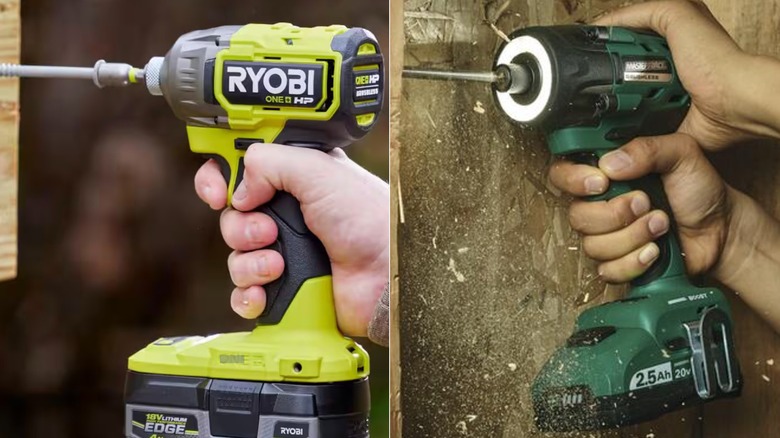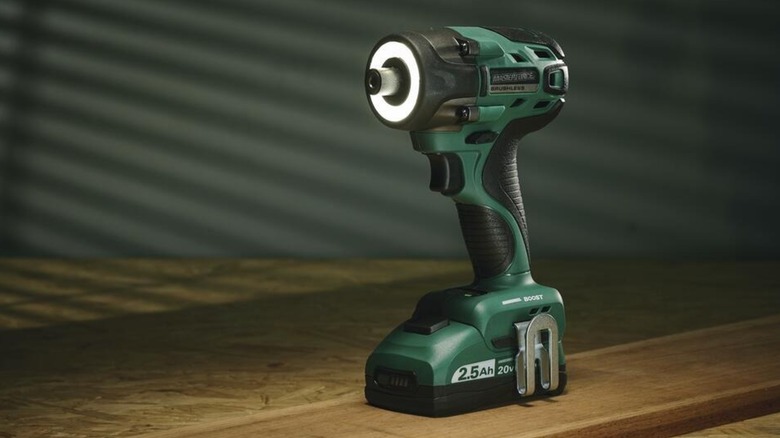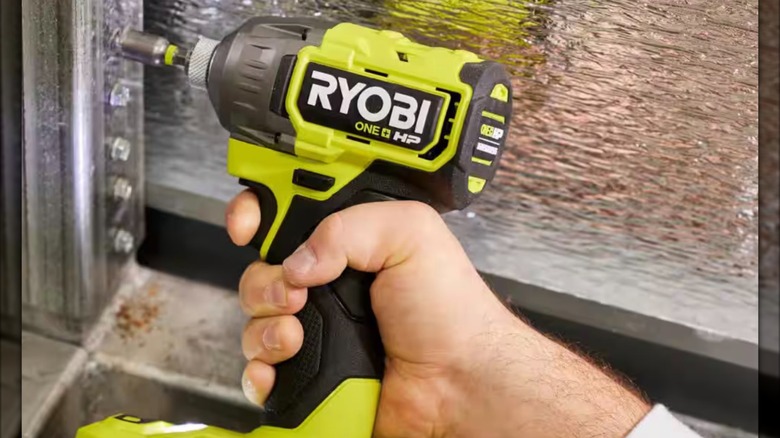Ryobi Vs. Masterforce Impact Driver: How These Competitor Power Tools Compare
We may receive a commission on purchases made from links.
You won't find Makita products at Menards, but you will find plenty of Masterforce tools. That's because Masterforce is a house brand of Menards, and exclusive to the home improvement retailer, which is based in Wisconsin and has over 300 locations in the Midwest and surrounding states. Masterforce tools are produced by Chervron, the Chinese-based owner of tool brands like Skil, Ego, and Flex and makes a range of hand tools, power tools, storage, and accessories, including outdoor equipment, automotive gear, and more.
If you're looking for an impact driver, Masterforce offers several different models, including brushless, hydraulic, ultra quiet, ultra compact, and standard cordless ¼-inch models. The brand isn't obscure or niche, though it's not really big enough to make the list of the best major impact driver tool brands, so that might have you wondering how its impact drivers compare to those of a more well-known competitor, like Ryobi.
Ryobi also offers multiple kinds and models of impact drivers, though Ryobi easily beats Masterforce when it comes to availability. You can easily find its products at multiple retailers, including brick-and-mortar chains and online outlets like Amazon. You're only going to find Masterforce at Menards, although for what it's worth, it's one of the best tool brands exclusive to one hardware chain that you can find. Masterforce has a reputation for well-made tools and, generally speaking, its impact drivers are as reasonably priced as Ryobi's. Both brands offer at least one model for less than $50. The various impact drivers made by Ryobi are part of its proprietary 18V One+ system. Similarly, all of Masterforce's impact drivers run on its proprietary 20V batteries, which are not compatible with other brands.
Masterforce's impact driver offers a bit more power and speed for less money
There are times when you should use an impact driver and times when you shouldn't, and a big factor is the required amount of torque needed for a given task. The most powerful Ryobi impact driver is its second-gen 18V One+ 4-mode ¼-inch Hex (model PBLID04B), which can deliver up to 2,300 in-lbs of torque at its highest setting. This gives Masterforce a slight edge when it comes to power, as Masterforce's most powerful impact driver — the Boost 20-Volt ¼-inch Impact Driver (model 2582.4) — maxes out at 2,400 in-lbs of torque.
Masterforce's impact driver is also a bit faster, capable of 3,600 revolutions per minute and 4,300 impacts per minute, compared to Ryobi's 3,400 rpm and 4,200 ipm. Both offer four separate speed settings, with Masterforce including an autostop feature and Ryobi including an auto-assist forward/reverse. While it's not in its name, the Boost 20-Volt is also a hex-shank like Ryobi's and both tools have on-board worklights, with Masterforce's tri-LED encircling the driver and Ryobi's built into the base.
Not only is Masterforce's impact driver a little bit stronger and faster than Ryobi's, but it's also a little cheaper. The Ryobi 18V One+ 4-mode ¼-inch Hex PBLID04B sells for $129, which is pricier than the Masterforce Boost 20-Volt ¼-inch Impact Driver 2582.4. Masterforce's driver has a list price of $119.99 and, when combining a mail-in rebate, the tool is available for just $107, making it over $20 less than Ryobi's.
Hands-on reviews find that Masterforce's impact driver is bulky but holds its own against Ryobi
After getting some hands-on time with the Ryobi 18V One+ 4-mode ¼-inch Hex PBLID04B, Pro Tool Reviews called the improved performance over the first-gen model "nothing short of spectacular, and the overall design is approachable and very user-friendly for all skill levels." The expert testers at Pro Tool Reviews also spent some hands-on time with the 5740 model of the Masterforce Boost 20-Volt ¼-inch Impact Driver and found it to be very robust, yet also felt it was on the bulkier side compared to other impact drivers.
Overall, the publication found the tool to be well-balanced and praised the design of the LED ring light. For an even more direct hands-on comparison between Ryobi and Masterforce, the YouTube channel Making Stuff & Breaking Stuff tested previous-gen impact drivers from both brands on various-sized wood screws. The reviewer's conclusion was that Masterforce's driver outperformed Ryobi's on smaller screws, though it struggled with fatter wood screws. The YouTube host adds that Masterforce would likely outright win in a head-to-head test if both tools were using standard batteries, saying that Ryobi's impact driver only performed as well as it did because it was powered by stronger (more expensive) Ryobi HP batteries, while the Masterforce was using a standard 20V Li-ion.


